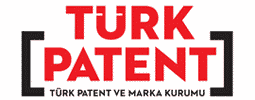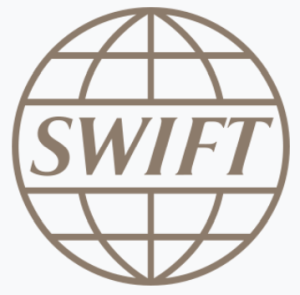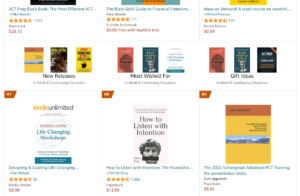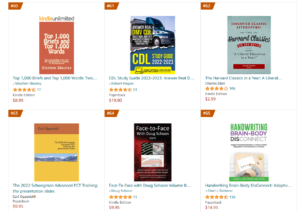 The Turkish Patent and Trademark Office has announced that it will join the WIPO DAS system, with effect from June 1, 2022. Turkey’s participation will be as a Depositing Office, and the participation will be with respect to every possible type of application, as will be discussed. Continue reading “Turkey joins the DAS system”
The Turkish Patent and Trademark Office has announced that it will join the WIPO DAS system, with effect from June 1, 2022. Turkey’s participation will be as a Depositing Office, and the participation will be with respect to every possible type of application, as will be discussed. Continue reading “Turkey joins the DAS system”
WIPO provides another option for two-factor authentication in ePCT
 If you want to do any of the good things in ePCT, you have to be logged in using two-factor authentication (“2FA”). (WIPO chooses to call this “strong authentication”.) One of the nice things is that WIPO offers several distinct kinds of 2FA that a user can choose from. Now WIPO has added yet another option for a type of 2FA that users can use. The newly added option is something they call “push notification”. It uses something called the ForgeRock Authenticator app. I think that many ePCT users will find this new “push notification” type of 2FA to be extremely quick and convenient and will end up choosing to use this kind of 2FA to the exclusion of all of the other kinds of 2FA. In this blog article:
If you want to do any of the good things in ePCT, you have to be logged in using two-factor authentication (“2FA”). (WIPO chooses to call this “strong authentication”.) One of the nice things is that WIPO offers several distinct kinds of 2FA that a user can choose from. Now WIPO has added yet another option for a type of 2FA that users can use. The newly added option is something they call “push notification”. It uses something called the ForgeRock Authenticator app. I think that many ePCT users will find this new “push notification” type of 2FA to be extremely quick and convenient and will end up choosing to use this kind of 2FA to the exclusion of all of the other kinds of 2FA. In this blog article:
- I will briefly describe this new “push notification” approach,
- I will explain how to install it and set it up,
- I will briefly remind the reader of the three other types of 2FA that WIPO offers for use with ePCT, listing a few factors for comparison among the four approaches for 2FA, and then
- I will talk about what I think are the best and smartest ways to use this new “push notification” approach.
If you have tried the ForgeRock Authenticator app with ePCT, please post a comment below.
Continue reading “WIPO provides another option for two-factor authentication in ePCT”
Please sign this PCT-related letter to the new Director of the USPTO
(The letter has been signed and has been sent to Director Vidal. You can see it here.)
Hello Colleagues. Here is a letter that I plan to send to Director Kathi Vidal. My goal is to send it on Tuesday, April 26, 2022. What this means is that I hope you will sign the letter between now and the close of business on Monday, April 25, 2022. Here are the “asks”: Continue reading “Please sign this PCT-related letter to the new Director of the USPTO”
How to be unwise when naming your firm
 One of the dumbest things that you can do when you are naming your intellectual property firm, it turns out, is picking a name that is more than 35 characters in length. If you make this mistake, it means you often can’t get paid.
One of the dumbest things that you can do when you are naming your intellectual property firm, it turns out, is picking a name that is more than 35 characters in length. If you make this mistake, it means you often can’t get paid.
A related dumb thing is arranging to have a street address that exceeds 35 characters in length. This, too, might mean that you can’t get paid.
It turns out that there is a simple and quick fix for this problem, as I will mention at the end of this blog article.
A happy email to a client
Here, of course with necessary redactions, is the gist of an email that I sent to a patent client today. The main point of the email message was to try to explain why the dollar amount of a bill was much smaller than one would normally expect it to be. There was also a second communications goal for the email, which is to explain how it is that we apparently are going to get an allowance essentially instantly from an art unit that has a First Office Action Prediction that is “pegged” at 30 months and in which the true number, if the USPTO were to be candid about it, is surely a much higher number of months than 30. Continue reading “A happy email to a client”
Why the word “mobile” in that odd USPTO notice yesterday?
Yesterday the USPTO posted a very odd notice telling all of its customers who use Time-base One-Time Password apps for two-factor authentication that between now and May 1, 2022, they need to discard their existing Secret Code Number and get a new Secret Code Number. As I blogged yesterday (blog article) the notice is strikingly close to being content-free, explaining almost nothing about what it is trying to say. Alert reader Gerry Peters posted a comment to my blog article that made me realize that not only was the USPTO notice nearly content-free, but it also used the word “mobile” in an extremely awkward way. Gerry pointed out that a succinct writer could simply have used the two-word phrase “authenticator app” throughout the USPTO notice, and that instead the writer went to the special point of inserting the word “mobile” no fewer than seven times into the notice, forming the three-word phrase “mobile authenticator app” all seven times.
Gerry pointed out that most users of USPTO systems like PAIR and EFS-Web and Patentcenter and TEAS (all of which require the use of two-factor authentication) almost certainly do not log in on a mobile phone but instead log in on a desktop or notebook computer. Gerry pointed out, correctly, that the everyday shorthand phrase that most people use as a substitute for the accurate but rather longer phrase “Time-base One-Time Password app” is simply the two-word phase “authenticator app”. Gerry wondered whether the seven-time insertion of “mobile” into the phrase was merely a sort of nervous tic, a completely unnecessary addition of a throwaway word, or whether the three-word phrase seemingly so carefully constructed and so consistently employed from the top to the bottom of the USPTO notice might have some significance. Maybe for example the need for users to go through this complicated process of discarding an existing Secret Code Number and getting a new Secret Code number is limited to that subset of users who use mobile devices for logging in at the USPTO?
Having read Gerry’s comment, and having given the matter quite a bit of thought, I conclude two things. Continue reading “Why the word “mobile” in that odd USPTO notice yesterday?”
Why you are forced to do yet another setup of your USPTO authenticator app settings
Many of us use an authenticator app such as Authy or Google Authenticator as our way of doing two-factor authentication when logging in at the USPTO. Many of us recall the USPTO crash of about a year ago (blog article), that forced us to do another setup of our USPTO authenticator app settings. Now comes a strikingly content-free announcement from the USPTO that we must all do yet another setup of our USPTO authenticator app settings. Why is it, exactly, that we must do this? I think I figured it out. Continue reading “Why you are forced to do yet another setup of your USPTO authenticator app settings”
Now #9 in adult and continuing education

Yesterday this new book The 2022 Schwegman Advanced PCT Training: the presentation slides was at position #65 in Amazon’s best-seller ranking of “adult and continuing education”. Today it is at position #9. Continue reading “Now #9 in adult and continuing education”
Now #63 in adult and continuing education

Amazon maintains sales statistics on every large or small thing that a person could possibly want to know about its book sales. My newly released book The 2022 Schwegman Advanced PCT Training: the presentation slides has apparently just now reached a ranking of number 63 in Amazon’s category of adult and continuing education. As you can see in the screen shot at right, this book trails two positions below a study guide for a commercial drivers license test.
I think that this tells you not so much about a large number of copies of my book being purchased, but instead about the relatively small number of books that people purchase that fall within this category of adult and continuing education.
For context, Amazon says that among books generally, my newly released book has a “best sellers” ranking in position 112,026.
Time of day at IB returns to normal for US filers
On March 13 I blogged that US filers filing documents at the International Bureau needed to pay extra close attention to what time it is in Switzerland. The reason is that in the US, Daylight Saving Time happened on March 13. But it did not happen on that day in Switzerland. This meant that for the past two weeks, a US-based filer in (for example) the Mountain Time zone would be able to e-file in the IB as late as 5PM and still get a same-day filing date. This differed from the usual drop-dead time of 4PM.
Today (March 27, 2022) is the day that Daylight Saving Time happens in Switzerland. The consequence of this is that the time difference between the US filer’s time zone and the time at the IB is back to normal. So for a US-based filer in the Mountain Time zone, the drop-dead time returns today to the usual 4PM.
This change affects for example a US-based filer filing a PCT application at the RO/IB, and it affects the US-based filer filing a design application in the IB’s Hague Agreement e-filing system. It also affects the US-based filer filing documents at the IB relating to the Madrid Protocol, such as for example a Subsequent Designation.
Most readers of my blog will appreciate that the correct terminology is not “Daylight Savings Time” but “Daylight Saving Time”.
Many readers will also appreciate that EU has been trying for the past two years to get rid of this clock-changing. There have also been largely feckless efforts in various states of the US to bring an end to this clock-changing. I personally would like it if the place where I am located, and the places where patent and trademark offices are that I care about, would all bring an end to clock-changing.
